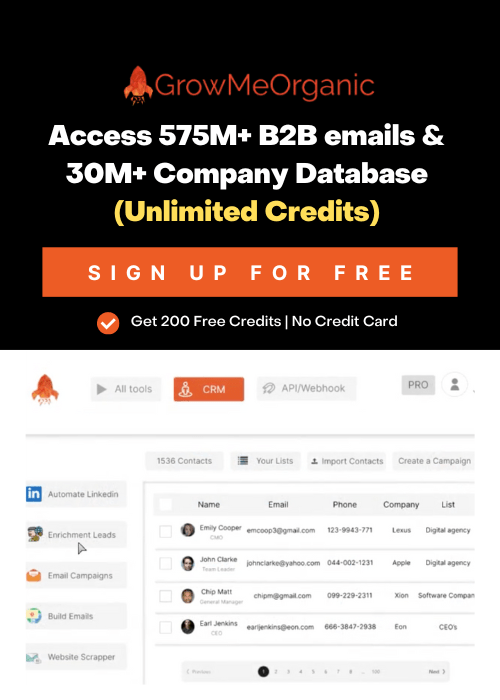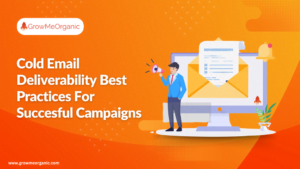Sending too many emails at the same time can annoy your subscribers. On the other hand, sending a few could develop a lack of interest in your audience. So, what is the best email sending frequency (email cadence) to generate the highest engagement?
Sending emails less than once per month may result in email deliverability issues. This happens because people are less likely to remember you and might unsubscribe from your emails.
Also, some of the email addresses sent will no longer be valid, resulting in hard bounces and spam traps.
The best email sending frequency that generates the most engagement depends on your subscribers. What you offer them in terms of value is up to you.
To learn more, let’s discuss the email sending frequency (Email Cadence) and how many you should send at a particular time.
What is an Email Cadence?
Email cadence is the timing and frequency of emails optimized to receive the highest level of user engagement. It includes the emails you send to a subscriber in the customer journey.
For instance, an online educational organization might send emails to its users multiple times a week, and its promotional newsletters might be sent once per month.
Every business has different email recipients and might offer various newsletters. Your email sending frequency depends on your target audience, email types, and goals.
Our data analysis will help you to know about –
- Entire email marketing sending landscape.
- Email engagement rates for an everyday mailer to a monthly mailer
- Email frequency benchmarks for various industries.
Moreover, emails sent multiple times per week always have slightly fewer opens than emails sent monthly to the same users. So, the best email open rates are not bound exclusively to email cadence.
The click-through rate was higher for emails sent most frequently. Therefore, emails that showcase timely news or offers, such as daily deals, are clicked immediately.
However, this is followed by one per week or once every two weeks. So, a lower sending frequency has better CTR results.
Email Frequency Based On Customer’s buying behavior in different Industry
Each business will provide different services and messaging that affect the number of emails. Let’s have a look at the email frequency.
| Industry | Days between Emails (median) |
| Agriculture Services | 11.50 |
| Arts and artists | 17.30 |
| Author | 12.60 |
| Beauty and personal care | 12.55 |
| Blogger | 9.70 |
| Health and Fitness | 11.80 |
| Consulting | 9.85 |
| Creative services/agency | 11.75 |
| E-commerce | 10.05 |
| Education and training | 10.65 |
| Educational institution | 8.80 |
| Entertainment and events | 12.70 |
| Home and Garden | 9.75 |
| Hobbies | 11.25 |
| Travel and Transportation | 11.45 |
| Marketing and advertising | 8.50 |
| Media and publishing | 14.35 |
| Medical, dental, and healthcare | 14.10 |
| Non-profit | 11.45 |
| Publishing company | 9.80 |
| Real estate | 11.75 |
| Religion | 7.05 |
| Retail | 12.20 |
| Software and web apps | 10.85 |
| Travel and transportation | 12.55 |
How To Determine Email Frequency By Monitoring Metrics?
The most favorable way to monitor your email cadence is to analyze your industry benchmarks and performance metrics by experimenting with different sending frequencies. You can also monitor your opens or clicks rates.
Conduct your A/B testing by sending half of your list at one time and the other half at another, and then compare the results.
Besides frequency, consider how many content or special offers you plan to share with your recipients. Never send emails that don’t deliver value.
In email marketing, there is a point of diminishing returns. This means that the time and resources required to create and send emails result in less return on investment.
Strategies For Finding Your Email Cadence

Let’s go through these email cadence best practices to give you an idea to figure out your optimal email cadence.
Start With Your Email Marketing Goals
In email cadence, consider the type of emails you send. Start with your goals and see what you are trying to accomplish with your email marketing campaign.
For instance, if your goal is to provide information daily, then send emails daily. However, people will only accept daily emails if they bring value every time.
So, if there is an increase in your unsubscribe rate, something is not working.
Align Email Frequency With Customer Behavior
Knowing your customers’ buying behaviors is important for mapping your email cadence with the customer journey. This is helpful when developing email marketing automation workflows that send emails based on a subscriber’s action.
For instance, if a subscriber reads a blog post on a certain niche, you can send them a related follow-up email regarding that blog.
Instead of just checking your email frequency, automate your emails. This allows you to let the subscriber dictate the best timing for their emails.
Set Expectations In Your Welcome Email
Always create a predefined automated welcome email. Welcome email lets you know the frequency of the newsletter you should send. You can also provide email frequency options by adding a link that allows subscribers to choose their preferences.
Create Subscriber Segments With Frequency Options
In traditional email marketing, segmentation sends targeted emails to a smaller group of email subscribers. This increases engagement because your emails can be customized for each specific audience.
You can also create email segments based on your subscriber’s preferred email frequency so your readers have options.
Add A Survey To Your Newsletter
Embedding email surveys is another option to provide to your subscribers where they can select their preferences. In surveys, you can ask people if they like the current frequency or prefer receiving emails more or less frequently.
Your recipients are the best people to advise you on the frequency of emails. Use the survey results to segment your list according to the frequency they want to receive your emails.
Use A/B Testing To Find What Subscriber’s Preferences
It is better to analyze how your subscribers respond to different frequencies and timings. Email A/B testing can give you detailed insight.
For example, split your subscribers into two groups. Then send Group 1 weekly newsletters and Group 2 bi-weekly. See which one results in higher open rates and CTR.
You can even test different times during the day, weeks, and content based on when the email is sent. Keep testing until you find the results that are the most successful email cadence for your audience.
Communicate With Other Teams In Your Organization
Always ensure that your organization does not send too many emails simultaneously. People often forget the difference between a sales email, a product update, and a marketing newsletter.
So, align your sending frequency and timing with those of the other departments. This will prevent you from simultaneously sending too many emails to your subscribers’ inboxes.
Personalize Where You Can

Remember all those marketing emails labeled “valued customer” or “to whom it may concern.” How many did you click? Not many, right?
Your customers feel the same way. To move leads along their buyer’s journey, your emails need engagement, which means personalization. 47.2% of marketers say email personalization is their most effective tool.
Your leads may be stuck if you’re still sending generic mass emails and hoping for results. The good news? Today’s email tools make it easy to tailor subject lines and content to specific audiences.
Pro Tip: Need inspiration? Check out these email personalization examples to spark your creativity.
Express Gratitude With Rewards
While a thank-you email is nice, it’s just a start. For your business to make an impact, you must incorporate a culture of thoughtful gifting. Even the most creative thank-yous fall flat without a personal touch.
By weaving surprise and delight into your customer experience, you’re not just saying thank you—you’re building loyalty and boosting engagement. But for this strategy to create that “wow” moment, the rewards must be well-curated and personalized.
Why? Because 83% of customers expect personalized experiences from brands they love. Creating your rewards to fit individual customers’ preferences shows you understand and value them.
Monitor Analytics
Tracking is non-negotiable for improving your email campaign. Monitor open rates, click-through rates, and engagement to see if your cadence is driving results or holding you back.
Finding the perfect email marketing cadence might take some trial and error, but there are steps to help you achieve the right balance.
Make your customers’ interests the priority. Consider where they’re in their journey, how ready they are to buy, and what they want from you, and tailor your cadence to fit.
Wrap Up
There’s no one-size-fits-all for email cadence. The success of your email marketing doesn’t come down to just frequency or a catchy subject line. It’s about aligning the right elements to meet your subscribers’ needs.
If your subscribers benefit from weekly updates, reach out weekly if they prefer less frequent contact. Test and adapt until you strike the right balance.
GrowMeOrganic can help you go beyond email. As an all-in-one marketing platform, we support your brand with website setup, e-commerce, analytics, and more.
Try GrowMeOrganic today to enhance your reach and build a stronger online presence.
FAQs
Q.1. How Many Marketing Emails Is Too Many?
The optimal frequency for marketing emails depends on your business, audience preferences, and expectations. Sending too many can lead to unsubscribes or spam reports, so aim for 1-2 emails per week and adjust based on engagement and feedback.
Q.2. How Many Emails To Send Per Week?
The ideal number of emails per week depends on your audience and content quality, but generally, 1-3 well-timed emails can keep your subscribers engaged without overwhelming them. Always prioritize value over volume.
Q.3. How Many Photos Can You Send In An Email?
The number of photos you can send in an email depends on the file sizes and email provider limits. Generally, it’s best to keep attachments under 20-25 MB in total to ensure smooth delivery.
Q.4. How Many Emails Should A Business Have?
A business should ideally have multiple email accounts for different functions, such as support, sales, and general inquiries, to streamline communication and ensure efficient customer service.
Q.5. How Many Emails Should You Send A Day?
To maintain strong email deliverability and reputation, start with a low sending volume (10–20 emails daily) and gradually increase. Remember, each email service provider (ESP) has specific daily sending limits.
Q.6. How Many Follow-Up Emails Should You Send?
You should generally send 2 to 3 follow-up emails after your initial outreach. Space them out by a week or so to give the recipient time to respond while keeping your communication polite and professional.
About Post Author
Anant Gupta
Growth Hacker, Marketing Automation Enthusiast & Founder of GrowMeOrganic







